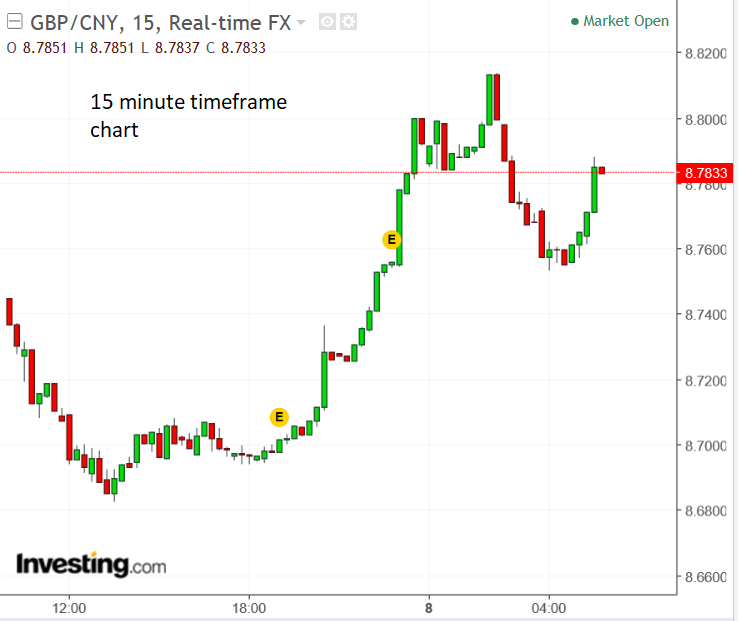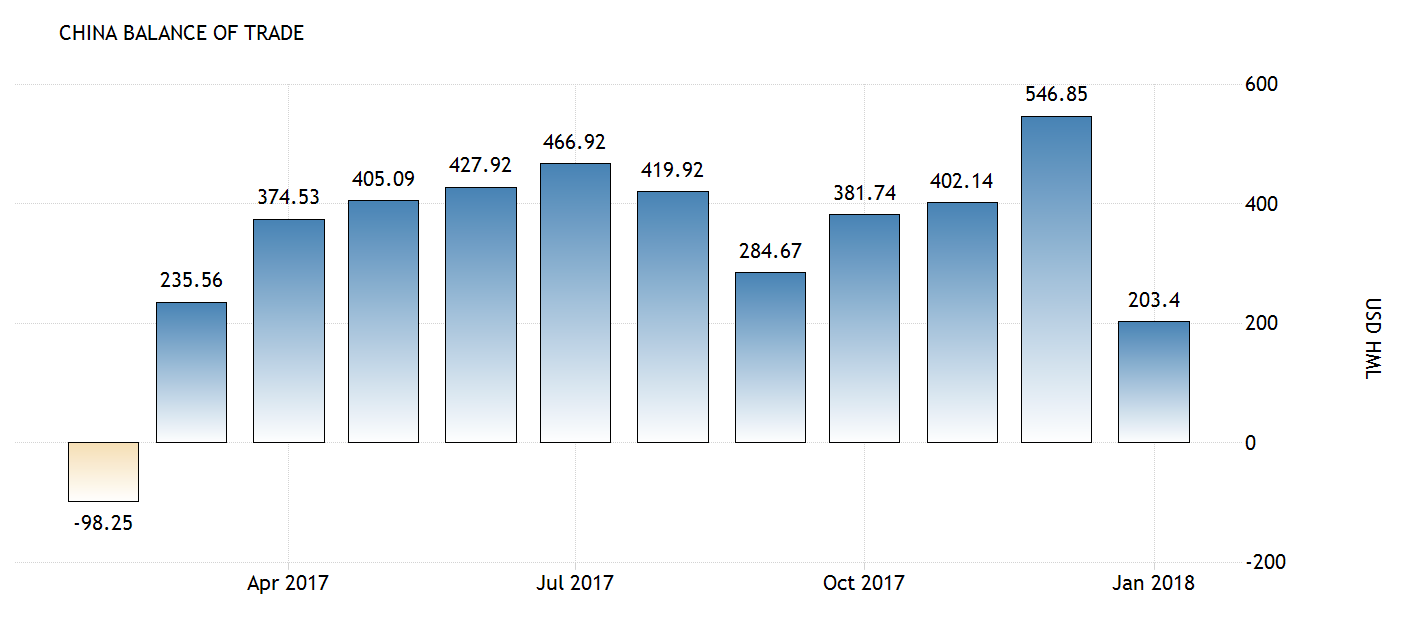The Yuan Falls After China Opens Its Borders

© thanasak, Adobe Stock
It may be the start of the year of the dog in China but the Chinese authorities are lowering their guard.
A loosening of regulations governing outflows as well as trade data led to a fall in the Chinese Renminbi overnight.
The main antagonist was a change in the regulations governing the accessibility of foreign assets to Chinese investors, which while previously constrained have been loosened.
The Yuan fell on the news, with one Pound buying 8.81 Yuan after the release from 8.68 before.
The rally of the Pound versus the Yuan (GBP/CNY) is shown on the 15-minute interval chart below.

The details of the change in regulation which led to the Yuan's fall are explained by Stephen Gallo chief European strategist at BMO Capital Markets:
"The focus was also on news that China was re-launching the Shanghai Qualified Domestic Limited Partnership (QDLP) programme, which allows foreign fund managers to raise money within a set quota from high net-worth Chinese investors so that the latter group can invest in non-RMB assets."
Gallo dismisses the argument from cynics that the Chinese are trying to devalue their currency with the move.
"Where capital flows and the RMB are concerned, today’s QDLP news is just another example of an administrative smoothing rather than an intention on the part of China to drastically weaken its currency. In the bigger picture, this is all about fostering ‘two-way flow’," says Gallo.
The other major news release which may have weighed on the Remnimbi was Chinese trade data which showed the trade surplus fall to 20.3bn in January from over 54.7bn previously.
 (Image courtesy of tradingeconomics.com)
(Image courtesy of tradingeconomics.com)
Chinese imports rose by 36.9% alone in January compared to a year earlier in January 2017, easily beating market expectations of 9.8%.
A major contributor to the steep rise in imports was both a rise in volume and the price of oil, with purchases of crude oil hitting a record volume of 40.64m tonnes compared with 33.7m in December.
This came after the authority's decision to raise its 2018 crude oil import quota by 55% compared to 2017.
Imports of iron ore also went up 19% to 100m tonnes, although this was put down to stocking up before the lifting of steel production curbs next month.
Purchases of coal rose to a four-year high of 27.81m tonnes, from only 22.74m as steelmakers mix iron ore with coal to make steel and due to increased coal use due to inclement weather.
There was also a large rise in the imports of machinery.
Exports rose higher than expected as well, only not nearly as much as imports.
Exports increased by 11.1% in January compared to 10.9% in December and higher than the 10.7% expected.
"China’s exports to key markets such as US, Hong Kong, EU, and ASEAN registered double-digit growth of 11.1% y/y, 18.9%, 10.3% and 18.4% respectively. Meanwhile, exports to Japan weakened to growth of 1.4% in Jan from 14.9% in Dec," says Singapore-based bank OUB in a note on the trade data.
Get up to 5% more foreign exchange by using a specialist provider to get closer to the real market rate and avoid the gaping spreads charged by your bank when providing currency. Learn more here.




